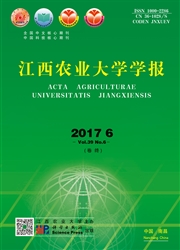

 中文摘要:
中文摘要:
森林植被恢复过程中,除物种自我调节作用外,种群间相互作用以及群落与生态环境因子间相互关系决定着群落的发展进程。对森林植被恢复阶段森林群落结构、森林生物多样性及土壤理化性质的动态变化进行了综述,同时总结了6种划分森林演替阶段的方法:(1)种间联结——最优分割法;(2)植被年龄;(3)生理组织特征;(4)遥感方法;(5)林分平均高和平均断面积;(6)林分特征因子法。最后对森林植被恢复研究进行展望,为植被恢复重建技术(包括植被恢复目标的确定、植被恢复的步骤与途径)及其采用的技术方法和决策提供依据。
 英文摘要:
英文摘要:
During the forest succession process, besides the self - adjustment of population, the interaction of forest community and the relationship between community and ecological environment decide the population development process. The study focuses on the dynamics of the structure of forest community, the forest biodiversity and the soil physicochemical properties. Simultaneously,6 methods for division of forest succession were summarized : ( 1 ) interspecific association - division method of optimization; (2) vegetation age; ( 3 ) physiognomic characteristics; (4) remote sensing method; (5) average stand height and basal area; ( 6 ) stand characters. Finally, the article also forecasts the forest vegetation restoration. This review provides the basis for technical approach and the decision - making of vegetation rehabilitation including the restoration of vegetation to the ideal obiectives, steps and the wav of vegetation restoration.
 同期刊论文项目
同期刊论文项目
 同项目期刊论文
同项目期刊论文
 期刊信息
期刊信息
